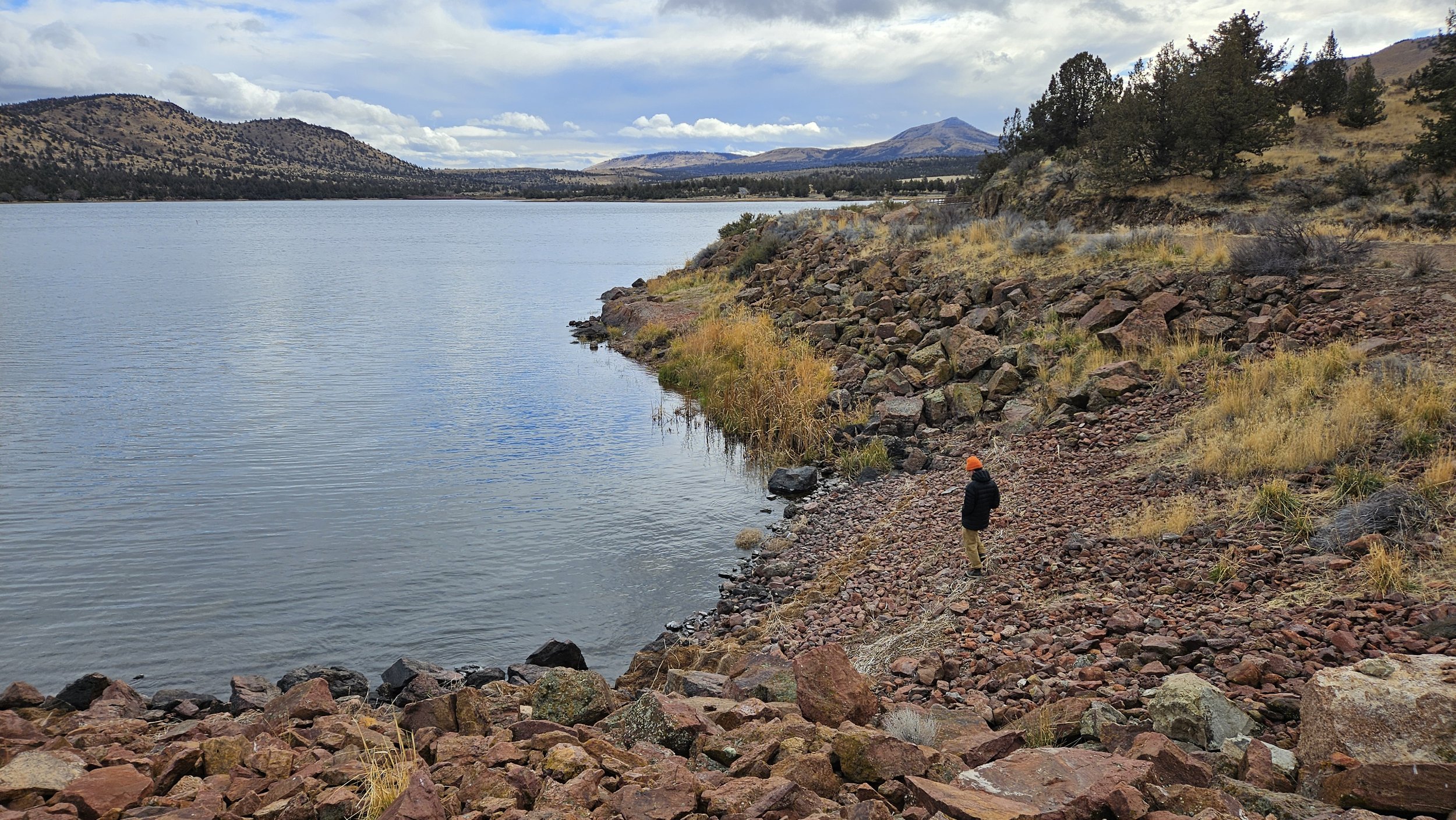Hike the Tam-a-láu Trail
Read the rocks, hear the birds, appreciate the wildflowers
By Lace Thornberg, Communications Director
-
In early spring, look for sand lilies. By mid-spring, expect a variety of wildflowers in bloom.
-
Bonus: the rocks don’t fly away.
-
Or, trail-running.
The view over Lake Billy Chinook
As winter departs and spring arrives, put the Tam-a-láu Trail on your list of hiking possibilities. Located on a high plateau in Cove Palisades State Park, this trail is a great place to appreciate birds, blooms, and one main feature that won’t fly away or change with the seasons: awe-inspiring geology.
On this moderate hike, you’ll be met with the hard part first. After leaving the parking area and crossing the road to the trailhead, you’ll climb steadily, 600 feet, in the first 1 mile. The winding switchbacks will allow you time to ponder the sweeping views of the canyon and make close-up inspections of the incredible array of plants.
When your uphill work is done, you’ll reach a junction where you can head clockwise or counter-clockwise, with either direction equally good. Head counterclockwise if you want to save some big open views of Lake Billy Chinook, which is named to honor a local Wasco guide from the 1840s, for the end of the hike. If you aren’t sure if you’ll do the whole loop, hike clockwise to get those views first.
Hiking across the plateau, you will at times feel like a giant towering above all the action that is happening close to the ground, where orange and yellow lichen color rocks and diminutive clusters of pink-purple phlox grow just a few inches tall. In other stretches, you’ll stand shoulder-to-shoulder with Great Basin big sagebrush and young juniper trees.
In early spring, look for the elegant, ephemeral white blooms of sand lilies. Visit in mid-to-late April and you can expect to find a good variety of wildflowers in bloom, including death camas, arrowleaf balsamroot, paintbrush, large-head clover, buckwheat, phlox, and agoseris.
As you look across the sagebrush and Western juniper, keep an ear open for the bouncy song of a Townsend’s solitaire. Can you imagine that these small gray birds will eat somewhere between 42,000 and 84,000 juniper berries to survive through winter? You might also hear the trill of dark-eyed juncos, or the sweet, trailing song of canyon wrens. During spring migration, you’re likely to see turkey vultures and hawks riding thermal updrafts, as well as resident bald eagles and ospreys fishing on the lake below.
In geologist Marli Miller’s beautiful report from this area, she writes: “The rocks here tell a story of earlier river canyons that occupied the same places as today’s Crooked and Deschutes Rivers.”
As you look out over Lake Billy Chinook, you’ll see a bedrock of ash deposited between 7.5 to 4 million years ago (the Deschutes Formation), Rimrock Basalt, and also brown-colored basalt (Intracanyon Basalt) which flowed here from a vent some 60 miles to the south, after an eruption about 1.2 million years ago.
Geology really is the main attraction here, a fact made clear by the name Tam-a-láu - an Ichishkiin phrase meaning “place of big rocks on the ground.”
Large-head clover
Agoseris - or is that a different damn yellow composite?
Driving Directions:
From Bend, head north on Highway 97 for 31 miles before taking a slight left onto SW Culver Hwy in Jefferson County. From there, take your first left onto SW Jericho Ln and follow the Oregon State Parks signs directing to Cove Palisades. Once in the park, continue on Jordan Rd as it winds the perimeter of Lake Billy Chinook. When you’ve crossed the bridge and are passing the park office on your right, prepare to park at the Lower Deschutes Day Use area which will be another half mile ahead on your right.
Permit / Pass Information:
$10 day use fee
Land Manager Contact Information:
541-546-3412







